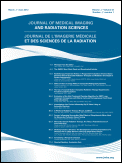
Journal of Medical Imaging and Radiation Sciences
Scope & Guideline
Exploring the intersection of technology and patient care.
Introduction
Aims and Scopes
- Medical Imaging Techniques:
The journal covers a wide range of topics related to various medical imaging modalities, including MRI, CT, PET, and ultrasound, focusing on advancements in technology, imaging protocols, and clinical applications. - Radiation Therapy Practices:
Research articles discuss innovative techniques in radiation therapy, including dosimetric analyses, treatment planning, and patient safety measures, contributing to improved therapeutic outcomes. - Artificial Intelligence in Imaging:
There is a significant focus on the integration of artificial intelligence and machine learning in medical imaging, exploring its applications, efficacy, and ethical considerations within clinical settings. - Interprofessional Collaboration:
The journal emphasizes the importance of teamwork and collaboration among healthcare professionals, highlighting studies on interprofessional education and practices that enhance patient care. - Patient-Centered Care:
Research in this area looks at patient experiences, perspectives, and involvement in their care, aiming to improve communication and engagement in medical imaging and radiation therapy. - Educational Innovations:
The journal features studies on educational methodologies and innovations in training for medical imaging and radiation therapy professionals, ensuring that curricula meet evolving industry standards. - Ethical and Regulatory Issues:
Articles often address the ethical, legal, and regulatory implications of practices in medical imaging and radiation therapy, providing a framework for responsible and safe practice.
Trending and Emerging
- Artificial Intelligence Applications:
There is a marked increase in research exploring the applications of AI in medical imaging, including predictive modeling, image analysis, and workflow optimization, underscoring its transformative potential in the field. - Interprofessional Education and Collaboration:
Emerging themes highlight the importance of interprofessional education and collaboration among healthcare providers, with studies focusing on how teamwork can enhance patient outcomes and professional development. - Patient Engagement and Experience:
A growing emphasis on patient-centered care is evident, with research focusing on patient experiences, preferences, and the impact of engagement on treatment decisions and satisfaction. - Telehealth and Remote Imaging:
The COVID-19 pandemic has accelerated interest in telehealth and remote imaging practices, with research examining their effectiveness, challenges, and future implications for patient care. - Sustainability in Healthcare:
An emerging theme is the focus on sustainability and environmental considerations within medical imaging and radiation therapy, exploring practices that minimize waste and reduce carbon footprints. - Mental Health and Wellbeing of Practitioners:
There is an increasing recognition of the mental health challenges faced by medical imaging and radiation professionals, leading to research addressing wellbeing, burnout, and support structures.
Declining or Waning
- Traditional Imaging Techniques:
There has been a noticeable decline in research focused solely on traditional imaging techniques without the integration of advanced technologies or innovative practices, as the field shifts towards more sophisticated modalities. - Personal Experiences and Anecdotal Evidence:
While personal narratives and anecdotal experiences were once common, there has been a waning interest in this type of publication, as the journal increasingly prioritizes evidence-based research and systematic reviews. - Generalized Radiation Safety Practices:
Research that broadly discusses radiation safety practices without specific applications or advancements is becoming less frequent, as the focus shifts to more detailed and innovative safety measures. - Single-Institution Studies:
There is a trend away from studies that focus on single-institution data, with a preference for multi-center or broader studies that provide more generalizable findings. - Historical Perspectives:
The journal has seen a decrease in articles that delve into historical perspectives of medical imaging or radiation practices, as contemporary issues and future directions take precedence.
Similar Journals
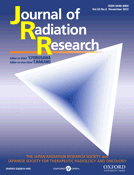
JOURNAL OF RADIATION RESEARCH
Fostering innovation in radiation studies for a healthier future.JOURNAL OF RADIATION RESEARCH, published by Oxford University Press, is a prominent peer-reviewed journal focusing on the diverse fields of radiation science, including health, toxicology, and radiology. Since its inception in 1960, this open-access journal has provided a critical platform for the dissemination of high-quality research, making it accessible to a global audience of researchers, professionals, and students. With a consistent track record, the journal holds an impressive impact factor and is categorized in Q2 of Radiation studies and Q3 in Health and Toxicology as per the 2023 rankings, reflecting its influential role in shaping contemporary discourse in the field. The journal also boasts notable rankings within Scopus, further underscoring its importance in advancing knowledge and innovations related to radiation. Spanning from 1960 to 2024, the JOURNAL OF RADIATION RESEARCH remains at the forefront of scientific exploration and is essential reading for anyone committed to advancing the understanding of radiation and its effects.
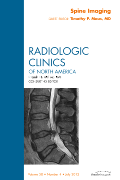
RADIOLOGIC CLINICS OF NORTH AMERICA
Advancing the Frontiers of Medical Imaging.Radiologic Clinics of North America, published by W B Saunders Co-Elsevier Inc, stands as a pivotal resource in the field of medical imaging and radiology. With a solid history dating back to 1963 and converging years extending to 2024, this journal has established itself as a reputable platform for original research, comprehensive reviews, and insightful discussions that advance the knowledge and practice of radiology, nuclear medicine, and imaging. Holding a Q2 classification in both the miscellaneous medicine and radiology categories and positioned within the 56th percentile among its peers, its contributions are vital for both academic research and clinical applications. Although it does not offer open access, the journal remains accessible through institutional subscriptions and is a must-read for researchers, healthcare professionals, and students keen on the latest developments in radiological practices. With a dedicated editorial board and a commitment to the highest academic standards, Radiologic Clinics of North America continues to shape the future of the medical imaging field.

Advances in Radiation Oncology
Driving Breakthroughs in Radiation TherapyAdvances in Radiation Oncology, published by Elsevier Inc, is a premier international journal dedicated to the field of oncology and radiology, focusing on the latest groundbreaking research and innovations in radiation therapy. Launched as an Open Access journal in 2016, it has since carved out a significant niche in the academic community, featuring contributions that span a diverse range of topics including clinical practices, technologies, and outcomes in radiation oncology. With an impressive Q2 rankingOncology and Radiology, Nuclear Medicine and Imaging categories for 2023, and positioned within the 65th and 55th percentiles of Scopus ranks, it serves as an essential resource for researchers, medical professionals, and students alike. The journal not only emphasizes the importance of disseminating knowledge widely through its open access model but also aims to foster collaboration and innovation in the evolving landscape of cancer treatment. For those looking to stay at the forefront of radiotherapy research and advancements, Advances in Radiation Oncology is an invaluable platform for scholarly communication.
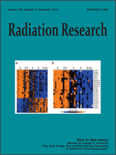
RADIATION RESEARCH
Bridging fundamental insights with applied radiation research.RADIATION RESEARCH is a prestigious journal published by the RADIATION RESEARCH SOC that serves as a vital resource for professionals and researchers in the fields of biophysics, radiation science, and radiology. Established in 1954, this journal has consistently advanced the study of radiation's effects on health and the environment, bridging fundamental and applied research. It boasts an impressive impact factor reflected in its quartile rankings, including Q2 in Biophysics and Q1 in Radiation, making it a highly regarded publication within its discipline. Researchers will find valuable insights through rigorous peer-reviewed articles that explore innovative methodologies and findings related to radiation exposure, imaging technologies, and the biological consequences of radiation. Although the journal does not currently offer open access, it remains a vital reference for academia and industry, fostering a deeper understanding of radiation sciences and their implications for future research and public health.

International Journal of Radiation Research
Connecting Global Scholars in Radiation ResearchThe International Journal of Radiation Research, published by the IJRR-IRANIAN JOURNAL RADIATION RES, serves as a critical platform for researchers and professionals in the fields of radiology, nuclear medicine, and imaging technology. Since its inception in 2003, this peer-reviewed, open-access journal has focused on disseminating significant findings and advancements, contributing to the global discourse on radiation research. With an ISSN of 2322-3243, the journal offers valuable insights into emerging technologies and methodologies, maintaining a commitment to enhancing the understanding and application of radiation in medical science. Although currently positioned in the Q4 category across its scopes, the journal strives to elevate its impact by promoting high-quality research and innovative practices. The journal is accessible to a wide audience and encourages submissions from scholars worldwide, directly supporting the advancement of knowledge in radiological and ultrasound technology. For those seeking to explore and contribute to this dynamic field, the International Journal of Radiation Research represents an invaluable resource.
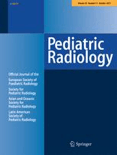
PEDIATRIC RADIOLOGY
Advancing pediatric imaging for better health outcomes.Pediatric Radiology is a leading journal published by Springer that provides a crucial platform for the dissemination of research in the fields of pediatrics, perinatology, and radiology. Since its inception in 1973, the journal has continually contributed to the advancement of medical imaging techniques and their application in diagnosing and treating pediatric conditions. With its impact factor reflecting a Q2 ranking in both Pediatrics and Radiology categories as of 2023, Pediatric Radiology is highly regarded in scholarly circles, aiding researchers, clinicians, and students to stay at the forefront of innovations and findings in the field. Although the journal does not offer open access, it continues to be an essential resource for evidence-based information that enhances clinical practice and improves health outcomes for children globally. The journal's reach is further established through its solid Scopus rankings, indicating its relevance and influence in the global medical community.
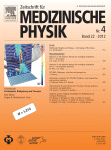
Zeitschrift fur Medizinische Physik
Innovating the intersection of medicine and physics.Zeitschrift für Medizinische Physik is a prominent academic journal dedicated to advancing the field of medical physics, published by ELSEVIER. With an ISSN of 0939-3889 and an E-ISSN of 1876-4436, this journal has transitioned to an Open Access model since 2022, ensuring that cutting-edge research is readily accessible to a global audience. Based in Germany at RADARWEG 29, 1043 NX AMSTERDAM, NETHERLANDS, the journal encompasses a wide array of topics related to medical physics, thereby facilitating interdisciplinary collaboration. Its impressive categorization includes Q3 in Biophysics and Q2 in both Radiological and Ultrasound Technology and Radiology, Nuclear Medicine and Imaging as of 2023, reflecting its significant contribution to the scientific community. In the Scopus rankings, it holds respectable positions in its categories: #143/333 in Radiology and Nuclear Medicine, #28/63 in Radiological and Ultrasound Technology, and #83/152 in Biophysics, demonstrating its influence and reach. The journal's focus is not only on publishing innovative research but also on fostering education and discussion among researchers, professionals, and students in medical physics. Zeitschrift für Medizinische Physik invites scholars at all levels to contribute and engage with the content that shapes the future of this vital field.
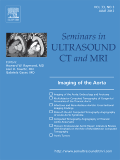
SEMINARS IN ULTRASOUND CT AND MRI
Exploring the Depths of Radiological ScienceSEMINARS IN ULTRASOUND CT AND MRI is a prestigious academic journal dedicated to advancing the fields of radiology, nuclear medicine, and imaging. Published by W B SAUNDERS CO-ELSEVIER INC, this journal has been a cornerstone of scholarly communication since 1984, providing a platform for high-quality research and review articles that enhance the understanding of diagnostic imaging techniques. With a current impact factor reflected in its Q3 quartile ranking among 333 journals in its category, it remains a valuable resource for researchers and clinicians alike. The journal's focus includes but is not limited to innovations in ultrasound, computed tomography, and magnetic resonance imaging, making it essential for professionals looking to stay at the forefront of imaging science. While it operates under a subscription model, its extensive archive of influential articles ensures ongoing access to critical knowledge and developments in the field. With a commitment to quality and relevance, SEMINARS IN ULTRASOUND CT AND MRI continues to contribute significantly to the evolving landscape of medical imaging.
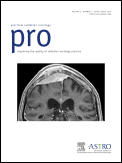
Practical Radiation Oncology
Bridging Science and Practice in OncologyPractical Radiation Oncology is a premier journal published by Elsevier Science Inc., focusing on the critically important fields of Oncology and Radiology, Nuclear Medicine, and Imaging. With an ISSN of 1879-8500, this journal serves as an essential resource for professionals and researchers dedicated to advancing the practice and research of radiation oncology. Established in 2011 and continuing through 2024, it has quickly gained recognition, achieving a prestigious Q2 ranking in Oncology and an exceptional Q1 ranking in Radiology, Nuclear Medicine, and Imaging as of 2023. The journal, housed in New York, USA, provides a platform for innovative research and practical insights, aimed at enhancing therapeutic practices and improving patient outcomes. As part of its commitment to fostering scientific dialogue, it also features a range of articles, reviews, and clinical studies that cater to the diverse interests of its readers. Hard-copy availability combined with digital access ensures a broad reach for the latest advancements in the field.
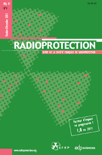
RADIOPROTECTION
Advancing safety in the realm of radiation.RADIOPROTECTION, published by EDP SCIENCES S A, stands as a pivotal journal in the multidisciplinary fields of Nuclear Energy, Public Health, and Environmental Safety. With an ISSN of 0033-8451 and an E-ISSN of 1769-700X, this journal delves into the crucial aspects of radiation protection and its interactions with health and environment, providing a platform for researchers and professionals to disseminate their findings and insights. Despite being classified in the Q4 quartile for Health, Toxicology and Mutagenesis in 2023, its Q3 status in prestigious categories such as Nuclear Energy and Engineering, and Public Health, underscores its relevance in contemporary academic discourse. The journal continues to expand its cachet with converged years of publication from 1977 to 1981 and 1988 to 2024, ensuring a rich history of scholarly contributions. Access options for interested readers include traditional subscriptions, allowing for comprehensive engagement with a broad range of topics surrounding safety, sustainability, and risk management. Whether you are a researcher, professional, or student, RADIOPROTECTION serves as an essential resource for expanding understanding and fostering innovation within its field.